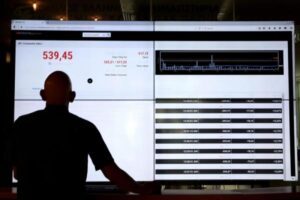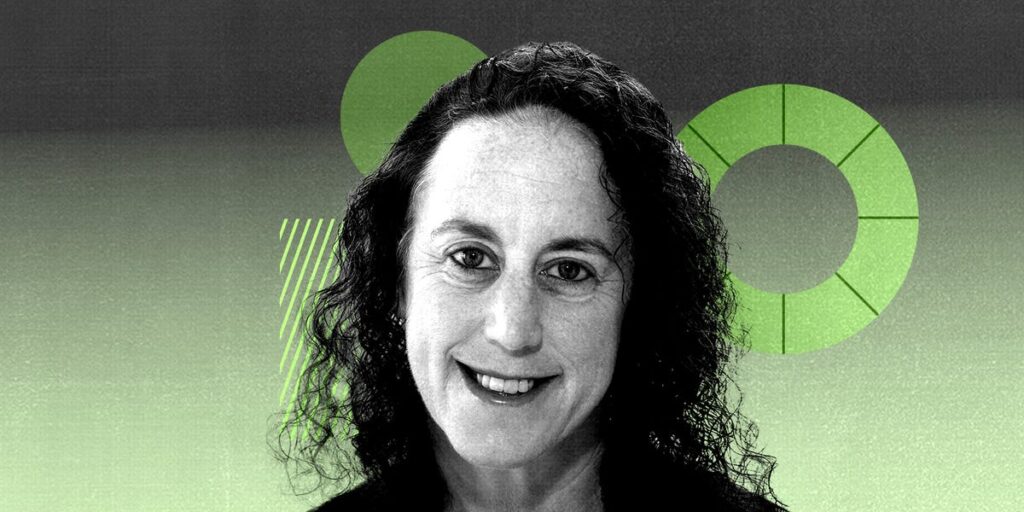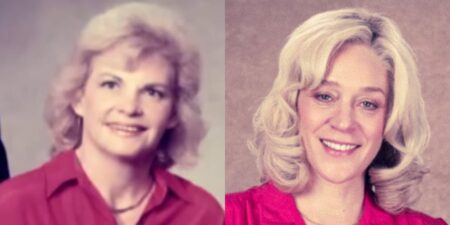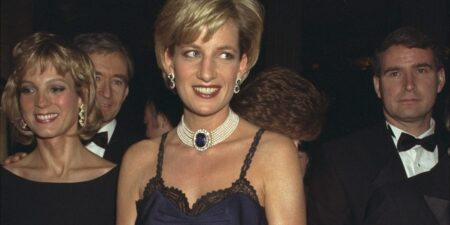Melissa Goldman will soon have oversight of the technology powering one of the highest-profile businesses on Wall Street.
As the incoming global head of technology engineering for Goldman Sachs’ global banking and markets division, the ex-Googler will run the engineering team for Goldman’s investment banking and sales and trading units.
“There is just a ton of stuff to do, so they tell me. And lots of different challenges in the space given how much is being invested in this particular business,” Goldman told Business Insider, referring to efforts to build systems that can handle the firm’s anticipated growth in a compliant and resilient way.
Goldman Sachs’ core business of advising companies through mergers, acquisitions, and raising capital, has come under the spotlight recently as investment-banking activity continues to be slow. It’s perhaps more important than ever for technology, through things like automation and artificial intelligence, to play “a significant role in lowering the cost of individual transactions,” Goldman said. Automating tasks could also help cut down junior bankers’ hours.
With an anticipated decline in trading volumes across Wall Street, Goldman’s sales and trading business will continue to lean on technology to win market share among institutional investors.
On Oct. 7, Goldman will return to the bank where she began her career 30 years ago as an analyst. During her first stint at Goldman, she managed various tech teams and was named managing director in 2008. More recently, she’s worked as the vice president of corporate engineering at Google and as the chief information officer of corporate technology at JPMorgan, where she was also chief data officer.
Though Goldman will be stepping into one of the biggest technology roles at the bank, she said one of her most important jobs out of the gate will be to listen.
“I’m inheriting this very robust portfolio and I think it’s important to make sure that people feel supported in the work that’s been happening,” Goldman said.
Videocalling in from Bermuda, where Goldman is on vacation before returning to Wall Street, the tech exec opens up about how she will bring some of what she’s learned at Google to Goldman, and the routine that lets her stay at the top of her game. This interview has been edited for length and clarity.
Is there anything that you picked up from your time in Big Tech, or at Google specifically, that you’re looking to incorporate at Goldman?
Google has a very unique and special culture, which I enjoyed for close to three years. That experience shaped me in all kinds of ways, and I’m going to bring those experiences forward.
The focus on the employee is exceptional in that organization. There are just a lot of different kinds of projects that evolve and change over time and there’s a lot of investment in areas where you have to fail sometimes to innovate at pace and at scale.
I mean, there are certain characteristics around accommodating individuals. They have a work-from-anywhere program where you have more flexibility in certain physical places where you can work. Those are just different kinds of things that are done to address, I think, some of the sentiments of the employees and try to create a different kind of accommodation in that context.
There’s a lot of talk of a softer third quarter in terms of trading volume, IPO activity, and M&A. How are you thinking about technology to help buoy the banking and markets business?
At the end of the day, technology plays a significant role in lowering the cost of individual transactions. I consider the responsibility that I have to the business to optimize, to create valuable insights that otherwise, decisions couldn’t be as precise and meticulous. Therefore, creating more of that opportunity to be able to wow and impress our clients with capabilities that they otherwise wouldn’t have accessible and available. These are all the kinds of things that I think the sort of technology portfolio can add.
This ends up being a team conversation with our business and really making sure that we’re putting investments against the things that we’re going to realize value.
But you could imagine thinking about all of the manual processes and all of the research that goes into the banking function, and how much access and availability there is to be able to get knowledge into processes in ways that are much more efficient through leverage of LLMs and such. That being said, precision around data and making sure that there are no hallucinations, becomes something that’s absolutely essential to this business, and so trying to investigate and figure out some of these things.
I have to admit, there might be a whole set of work already in progress, and so I don’t want to misstep here, but from the outside, these are the kinds of things that I could imagine would be ripe opportunities that would benefit the business.
There’s a lot of talk about junior bankers’ hours, especially with the recent JPMorgan and Bank of America announcements about implementing guardrails to protect younger bankers from burnout. How are you thinking about technology and maybe being able to automate some of those mundane, repeatable tasks that junior bankers do sometimes?
Well, my daughter’s dating a junior banker at another company, and I’m watching. She’s two years in, and I’m watching the activities that she’s involved in. And yeah, I mean, you look at some of it and you think, ‘Wow, being able to automate some of these tasks and pull information together in a reliable and meaningful way. These are some of the areas.’
I’m really looking forward to seeing where Goldman is on that journey and then figuring out how I could be more impactful in helping with that.
You’ve had a very impressive career jumping between some of the biggest names in tech and finance. What habits or hacks or routines help keep you at the top of your game?
I love my cardio because it puts me in a space where I can sort of clear my head and think not so much about transactional things but a little bit more about strategic things. It allows space and time for that while I’m actually doing something healthy for me. And so that’s something that I have really maintained a big part of, just my work-life balance.
I used to run a lot, and as I get older, I’ve learned that I’ve actually got to mix it up a little bit more. So I mostly alternate between running and cycling. I’ll go back and forth, but virtually six or seven days a week, I’ll have some form of cardio daily so that I get that time to just regenerate and put things into their right places so that I can tackle the days.
When you get back from Bermuda, when do you start?
I start on October 7th, and so I’ll be winding down at Google Friday. I’ll have two weeks to probably address my wardrobe because again, I am going back from t-shirts and jeans to now a little bit more of a formal, not too formal, but nonetheless banking culture. So I have to go try on a bunch of clothes and make sure I do a little bit of shopping before I start.
Read the full article here















